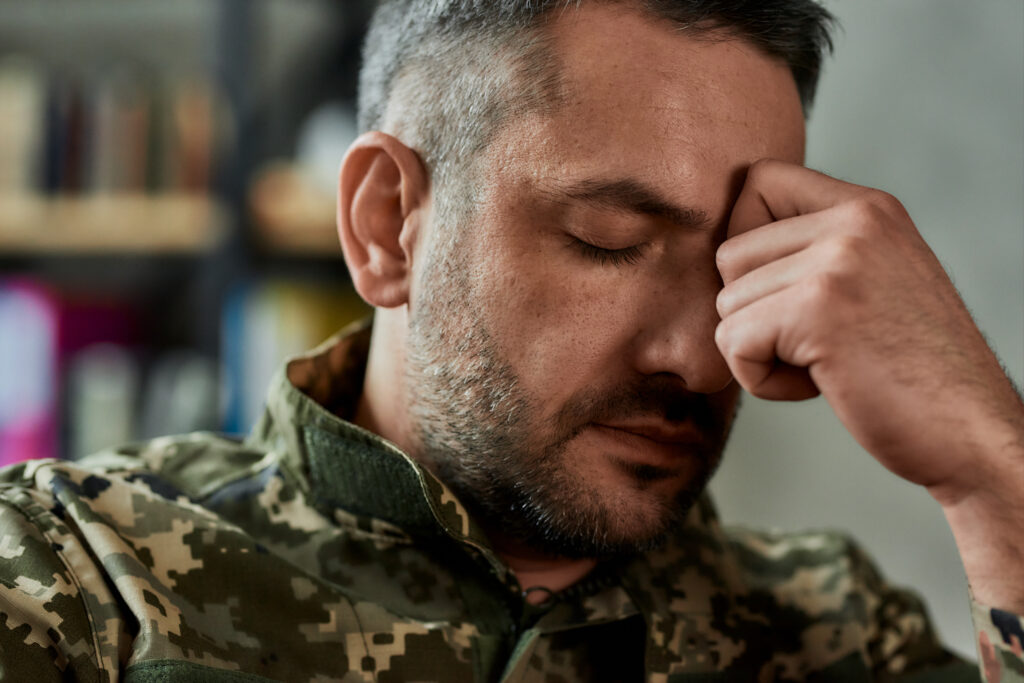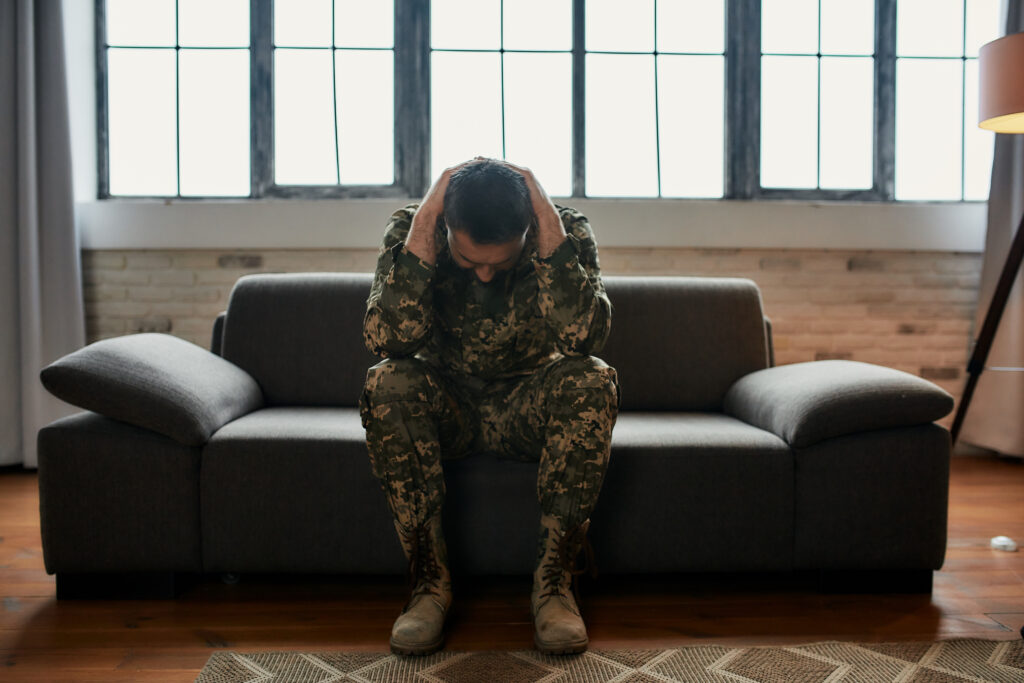Trauma and Women Veterans

Post-traumatic stress disorder (PTSD) and the effects of trauma were first studied in male veterans—primarily Vietnam War veterans. Later, researchers examining the effects of sexual assault discovered that female victims showed similar signs and symptoms to male combat veterans, leading to more research on PTSD and trauma in women.
Prevalence of Trauma and PTSD in Women vs. Men
According to the U.S. Department of Veterans Affairs, approximately five out of every 10 women will experience a traumatic event at some point during their life. An individual who experiences trauma will not necessarily go on to be diagnosed with PTSD. While it’s slightly more common for men to experience trauma than women, women are more than twice as likely to develop PTSD after trauma. Ten percent of women who experience trauma are diagnosed with PTSD, compared with just four percent of men. Potential reasons for this discrepancy include:
- Higher likelihood of experiencing sexual assault
- Sexual assault is more likely to lead to PTSD than other types of traumatic events
- Women might be more likely than men to blame themselves for the trauma they experience
After trauma, PTSD is more likely to occur in women who:
- Have a history of mental health issues
- Experienced severe or life-threatening traumatic events
- Were sexually assaulted or injured during the event
- Experienced more than one traumatic event
- Lack a social support system
While PTSD isn’t just specific to men or women, several factors play a role in why women are more affected by this following a traumatic event, then men.
How Do Signs and Symptoms Vary By Sex?
Men and women report the same PTSD symptoms, but some appear more commonly in women than men and vice versa. Symptoms of PTSD include:
- Reliving the traumatic event through flashbacks or nightmares
- Avoiding people and situations that remind them of the trauma
- Hyperarousal
- Negative thoughts or feelings
Avoidance, numbness and hyperarousal are all more likely to be seen in women suffering from PTSD. By contrast, men with PTSD are more likely to feel uncontrollable anger than women with the same condition. Depression and anxiety are more likely to co-occur with PTSD in women, while men with PTSD are more likely to develop substance use disorder as well.
All veterans are at high risk for experiencing trauma, especially if they have participated in combat.
Women and Military Sexual Trauma
Women in the military are more likely to be exposed to sexual harrassment or sexual assault compared with their male counterparts. About 1-in-3 women who use VA health care report military sexual trauma, or sexual assault or sexual harassment experienced during military service.
Despite the higher incidence among women veterans, more than half of all veterans with military sexual trauma are male. This is because there are so many more men than women serving in the military. According to the U.S. Department of Labor, only about 10 percent of the overall veteran population is female. Approximately 1-in-50 men who use VA health care report experiencing military sexual trauma.
According to the U.S. Department of Veterans Affairs, examples of military sexual trauma include:
- Being coerced or pressured into sexual activities (for example, a superior might threaten negative treatment if you refuse to cooperate, or promise of better treatment in exchange for sex)
- Sexual contact or activities without consent, including while asleep or intoxicated
- Being physically overpowered or forced to have sex
- Sexual touching that made you uncomfortable, including during hazing
- Unsolicited comments about your body or sex
- Unwanted sexual advances
Although more commonly reported in women, military sexual trauma does not discriminate based on—age, gender, sexual orientation, racial and ethnic background or branch of service.
Just as any military personnel or veteran might become a survivor of military sexual trauma, perpetrators may include—men or women, fellow service members or civilians, superiors or subordinates in the chain of command, intimate partners, friends or strangers. Military sexual trauma can occur while on or off duty, or on or off base.
Trauma and Substance Use
Symptoms of PTSD can have adverse effects on one’s family, relationships, work, physical health and mental health. For some veterans, substances are a way to cope with and manage the stressors and negative emotions that come with trauma.
This behavior is known as self-medicating, according to the National Center for Behavior Integration. Using substances is one way trauma survivors attempt to regain control over their emotions. However, substance use can have the opposite effect, worsening emotional dysregulation and PTSD symptoms.
One research study found that among veterans seeking initial treatment for PTSD from the VA health care system, about 11 percent met the criteria for substance use disorder. Although substance use is more common among male veterans and military personnel, this study found that 4.8 percent of female veterans seeking treatment had current alcohol use disorders, while 2.4 percent had current drug use.
Overall, women in the military are more likely to use substances if they are under 25 years old, unmarried, have PTSD, or experienced child physical or sexual abuse.
Treatment for Women With Trauma and PTSD
Women may be more likely to develop PTSD, but they’re also more likely to seek treatment and respond to treatment as well as or better than men. A potential reason for this finding is that in general, women may be more comfortable opening up and sharing personal details and emotions.
Pyramid Military Therapy & Recovery programs can help women veterans overcome the effects of trauma after war and improve quality of life. Whether you are struggling with trauma, PTSD, substance use disorder, depression, anxiety, chronic pain, or other medical issues after serving in the military, our evidence-based treatment approaches can help you achieve positive outcomes. Contact us to learn more about our treatment programs.



